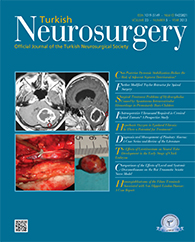2Sir Run Run Shaw Hospital, Medicine College of Zhejiang University, Department of Neurology, Hangzhou, China
3Sir Run Run Shaw Institute of Clinical Medicine of Zhejiang University, Hangzhou, China DOI : 10.5137/1019-5149.JTN.6573-12.1 AIM: The aim of this study was to systematically review the relevant literature to develop a benchmark for the incidence of adjacent segment degeneration (ASDeg) and adjacent segment disease (ASDis) following the posterior dynamic stabilization (PDS) procedure and to investigate whether conclusions can be made with regard to the isolated PDS procedure in reducing the risk of ASDeg and ASDis compared with fusion, and with regard to the role of additional PDS devices implanted adjacent to fusion in protecting from ASDeg and ASDis caused by the neighboring fusion.
MATERIAL and METHODS: We retrieved electronic databases of Medline, Ovid and Cochrane Central Registry of Controlled Trials, combined with a supplemental hand search. Thirty-one articles met our inclusion criteria.
RESULTS: The pooled incidence of ASDeg and ASDis following PDS procedure was 16.4% and 5.5% respectively. Data from comparative studies showed a significantly lower incidence of ASDeg and nonsignificantly lower incidence of ASDis following PDS than following fusion surgery. Further, the additional PDS devices implanted adjacent to fusion could significantly reduce the risk of ASDeg and nonsignificantly decrease that of ASDis caused by fusion.
CONCLUSION: These results suggested relative success of the PDS procedure in protecting against ASDeg and ASDis.
Keywords : Adjacent segment deterioration, Posterior dynamic stabilization, Lumbar fusion, Lumbar spine, Nonfusion instrumentation, Degenerative disc disease, Lumbar instability




